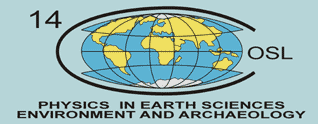

  |
GLIWICE RADIOCARBON LABORATORYRadiocarbon chronometryRadiocarbon chronometry similarly to other complex research methods is considered to be an independent branch of science. A group of several scientists developed it after many years of work. Though there is one man who undoubtedly should be regarded as the father of the radiocarbon chronometry, namely Willard Frank Libby. He was honoured for his work with the Nobel Prize in chemistry in 1960. The year 1946 is considered as the beginning of the radiocarbon chronometry development. M. Kamen and S. Ruben, Libby's close co-workers, were first to obtain 14C isotope as a result of 14N (n, p) 14C reaction during their experiments carried out in 1937 on the Berkeley's cyclotron. During the World War II both scientists along with W.F. Libby were engaged in the Manhattan Project. Farther, more regular research carried out under the leadership of Enrico Fermi as a part of Manhattan Project led to the determination of the cross-section for 14N (n, p) 14C reaction, and a more exact estimation of the 14C isotope half-life (5568 years). The last step taken to confirm the radiocarbon chronology was to prove the uniformity of the 14C isotope distribution in the biosphere. Activity measurements of contemporary plant samples from different latitudes led to the conclusion that the specific activity of the living biosphere is uniform. The specific activity value determined by Anderson and Libby to be 15.3 ± 0.1 dpm per g C was shown to be slightly overestimated in later measurements. |